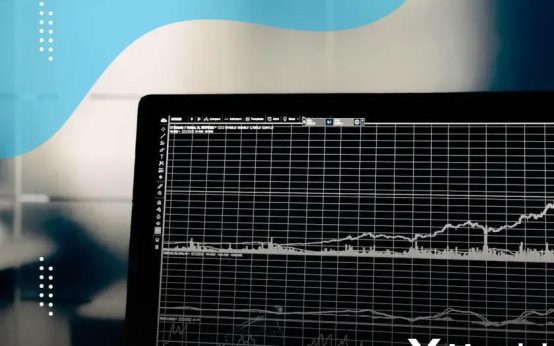
The financial situation in the United States is a topic of perennial interest, guiding decisions in government policy, shaping household budgets, and influencing global markets. Understanding its intricacies is crucial for making informed decisions. In this blog, we delve into key economic indicators, explore how policy changes impact households, and analyze current trends in income inequality. Stay tuned as we also make future economic predictions that could shape the road ahead.
Economic Overview and Key Indicators
The current financial landscape in the United States is shaped by various key economic indicators. These indicators provide valuable insights into the country’s overall economic health. One such indicator is the Gross Domestic Product (GDP), which reflects the total monetary value of goods and services produced within the country’s borders. A healthy GDP suggests strong economic growth, while stagnation may signify underlying issues.
Another critical metric is the unemployment rate. It evaluates the percentage of the labor force that is currently without work but actively seeking employment. A low unemployment rate often indicates a robust economy, providing citizens with ample job opportunities, whereas a high rate could signal economic distress.
Inflation rate is yet another vital indicator, measuring the rate at which the general price level of goods and services rises, thereby eroding purchasing power. Moderate inflation is often seen as a sign of a growing economy. Conversely, hyperinflation or deflation can be problematic.
Additionally, the Consumer Confidence Index (CCI) measures the degree of optimism that consumers feel about the overall state of the economy and their personal financial situation. High consumer confidence levels suggest that individuals are likely to spend more, which bolsters economic growth.
The trade balance, the difference between a nation’s exports and imports, also offers insight into economic stability. A positive balance indicates that a country exports more than it imports, enhancing its economic status. A trade deficit might suggest economic challenges.
These indicators collectively help economists, policymakers, and investors to understand the current economic status and project future trends. Their analysis assists in making informed decisions to navigate the financial challenges in the United States effectively.
Impact of Policy Changes on Households

Recent policy changes can have profound effects on household budgets and financial stability. Adjustments in taxation, healthcare, and educational policies often reflect broader economic strategies but may have complex implications at the household level. For many families, policy shifts in these areas can influence spending power and financial security.
Changes in taxation can impact household income directly. If taxes increase, families might have to adjust by reducing expenditures on non-essential items, or it could affect their ability to save. On the other hand, tax cuts or credits can enhance disposable income, increasing overall spending capacity.
The healthcare policy reforms can alter the costs associated with medical care. Households may see variations in healthcare premiums, co-pays, and available benefits. Policies that provide broader access to affordable healthcare could relieve some financial burden, while others might increase out-of-pocket expenses.
Educational policy changes influence families by altering the costs or quality of education. Shifts in funding for public schools or adjustments to loan policies for higher education can affect long-term financial planning for households, as these factors will determine access to quality education and related expenses.
Furthermore, government policies directed at housing can determine the affordability and availability of housing options. Initiatives to promote affordable housing or alterations to mortgage interest deductions may play a key role in family budgeting and homeownership capabilities.
Unemployment benefits’ policy changes can influence economic security for households facing job loss. Extended benefits or reduced barriers to qualification can provide crucial support, while cuts or more stringent eligibility criteria could increase financial pressure during unstable economic periods.
Overall, policy shifts significantly affect household economics, and it is crucial for families to stay informed about upcoming changes to plan and adjust accordingly.
Trends in Income Inequality
Income inequality in the United States has been a topic of significant discussion among economists and policymakers. It highlights the disparities in the economic well-being of different segments of society. Over recent decades, the gap between the rich and the poor has widened, raising concerns about social and economic stability.
Several factors have contributed to these trends. The shift from manufacturing to a service-based economy has resulted in polarized job growth where high-skill, high-paying jobs and low-skill, low-paying jobs have increased, but middle-skill jobs have declined. This shift often leaves middle-class families struggling to maintain their standard of living.
Technological advancements have also played a role. While new technologies have driven innovation and growth, they have disproportionately benefited those with the skills and education to leverage them, leading to higher salaries for those in tech-centric roles but leaving others behind.
Moreover, tax policies have sometimes favored the wealthy, contributing to capital accumulation by the top income layers. This accumulation further widens the income gap as wealth generates more wealth.
In addition, wage stagnation for many working-class Americans has exacerbated these disparities. While productivity has increased over the years, wages for many have not kept pace. This situation places additional financial strains on households that once relied on single incomes to thrive.
It’s crucial to understand these dynamics as they have far-reaching implications for social mobility, access to education, healthcare, and overall economic health. Policymakers must consider these trends when crafting legislation aimed at reducing inequality and promoting economic opportunity for all.
Future Economic Predictions
The economic landscape of the United States will be influenced by a variety of factors in the coming years. One key aspect to consider is technological advancement, which continues to drive innovation and efficiency in many industries. This can lead to job creation but might also result in job displacement as automation takes hold in certain sectors. Monitoring these trends will be crucial for understanding future employment patterns.
Another important element is the evolving global trade relationships influenced by geopolitical dynamics. Trade agreements and international cooperation will play a significant role in shaping economic growth and stability. As the U.S. engages in negotiations and updates policies, the repercussions will be felt across different sectors, impacting how businesses operate.
Additionally, attention must be given to the demographic changes within the country. An aging population may contribute to shifts in the labor market and healthcare demands. This change may require adaptations in policy to support an older workforce and address the financial implications on social services.
Monetary and fiscal policies remain pivotal in steering economic outcomes. As the Federal Reserve adjusts interest rates and the government enacts fiscal measures, their impact on inflation, employment, and overall economic growth will be observed closely. The balance between stimulating growth and maintaining economic stability will be a primary concern for policymakers.
The environmental sustainability of economic practices is gaining attention as a factor influencing future economic predictions. The shift towards greener technologies and sustainable practices could redefine industrial strategies and consumer behaviors. How companies and the government integrate sustainability into their operations will have long-term implications for economic resilience.
Finally, income inequality remains a pressing issue that could potentially affect social and economic stability if not addressed effectively. Efforts toward equitable wealth distribution and access to opportunities will be essential to ensuring inclusive economic growth.


 Diversification Benefits: Explore Risks with Alternative Investments
Diversification Benefits: Explore Risks with Alternative Investments  How to Detect Unauthorized Transactions Fast and Securely
How to Detect Unauthorized Transactions Fast and Securely  Foreign Transaction Fees: How They Affect Travelers’ Budgets
Foreign Transaction Fees: How They Affect Travelers’ Budgets